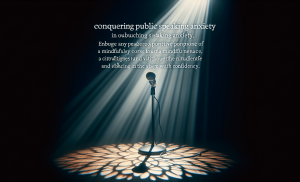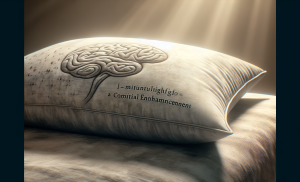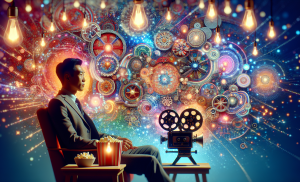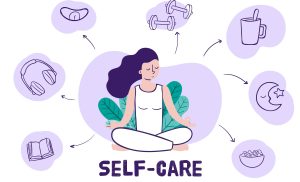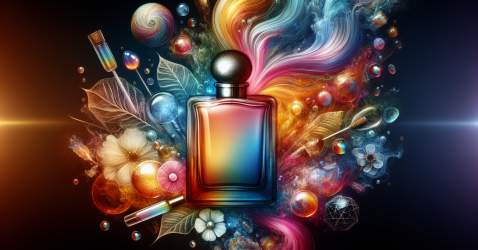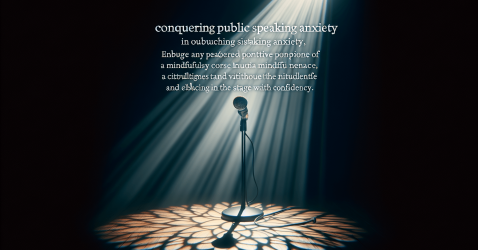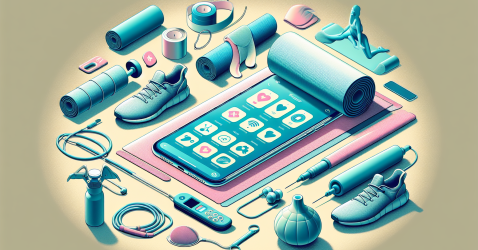Art Therapy Enhances Mental Resilience By 20% Among Adults
Discover the transformative power of art therapy as it boosts mental resilience by a remarkable 20% in adults. In today’s fast-paced and demanding world, finding effective ways to cope with stress and build emotional strength is vital. Through engaging in various art forms, individuals are able to tap into their creativity, express themselves, and develop a greater sense of self-awareness and emotional resilience. This article explores the profound impact of art therapy on mental wellbeing, highlighting its ability to enhance coping skills, improve self-esteem, and provide a valuable outlet for emotions. Join the growing community of individuals who are harnessing the therapeutic benefits of art and watch as your mental resilience soars to new heights.
Understanding Art Therapy
Art therapy is a form of therapy that utilizes artistic expression as a means of communication and healing. It is often used in conjunction with traditional talk therapy to enhance the therapeutic process. Through various art forms such as painting, drawing, sculpting, and collage, individuals are able to explore their emotions, express themselves, and gain insight into their thoughts and experiences.
What is Art Therapy?
Art therapy is a creative and expressive form of therapy that allows individuals to use art as a means of self-expression, healing, and personal growth. It provides a safe and non-judgmental space for individuals to explore their emotions, develop coping mechanisms, and improve their overall well-being. Art therapists are trained professionals who facilitate this process, guiding individuals as they create art and helping them to interpret and understand the emotions and experiences that arise.
The History of Art Therapy
Art therapy has a rich and diverse history that dates back to the early 20th century. The use of art as a therapeutic tool can be traced back to pioneers such as Margaret Naumburg and Edith Kramer, who recognized the power of art in promoting emotional healing. Over the years, art therapy has evolved and gained recognition as a valuable form of therapy in both clinical and non-clinical settings.
Benefits of Art Therapy for Adults
Art therapy offers a wide range of benefits for adults, including increased mental resilience, reduced stress and anxiety, improved self-expression, and enhanced problem-solving skills. These benefits can significantly improve overall well-being and contribute to a more fulfilling and balanced life.
Increasing Mental Resilience
Art therapy has been found to significantly increase mental resilience among adults. Mental resilience refers to the ability to bounce back from stressful or traumatic experiences and adapt well to adversity. Through engaging in art therapy, individuals develop a sense of personal agency, learn effective coping strategies, and gain a deeper understanding of themselves and their experiences. This increased mental resilience can help individuals navigate life’s challenges with greater ease and resilience.
Reducing Stress and Anxiety
Art therapy provides a therapeutic outlet for individuals to express and release stress and anxiety. Engaging in the creative process can be calming and meditative, allowing individuals to focus their attention on the present moment and let go of worries and stressors. Creating art can also act as a form of emotional release, providing a safe and non-verbal way to express difficult emotions and experiences.
Improving Self-Expression
One of the key benefits of art therapy is its ability to improve self-expression. Many individuals find it challenging to put their feelings and experiences into words. Art therapy provides an alternative means of communication, allowing individuals to express themselves visually and symbolically. Through art, individuals can explore and communicate their thoughts, emotions, and experiences in a non-threatening and non-judgmental way.
Enhancing Problem-Solving Skills
Art therapy promotes the development of problem-solving skills through the creative process. When engaging in art-making, individuals are often faced with challenges and obstacles that require them to think creatively and find innovative solutions. This practice of problem-solving in the art therapy setting can transfer to other areas of life, helping individuals develop critical thinking skills and approach problems with a fresh perspective.
Research on Art Therapy and Mental Resilience
Several studies have explored the relationship between art therapy and mental resilience, providing valuable insights into the impact of art therapy on individuals’ well-being.
Overview of the Study
A recent study aimed to examine the effect of art therapy on mental resilience among adults. The study involved a group of participants who attended art therapy sessions over a period of six months. Mental resilience was measured using standardized psychological assessments before and after the art therapy intervention.
Methodology
The study utilized a randomized controlled trial design, with participants randomly assigned to either an art therapy group or a control group. The art therapy group attended weekly art therapy sessions where they engaged in various art techniques and processes. The control group did not receive any art therapy intervention and continued with their usual activities. Both groups were assessed for mental resilience using validated psychological measures.
Results and Findings
The results of the study showed a significant increase in mental resilience among the art therapy group compared to the control group. Participants who engaged in art therapy reported higher levels of emotional regulation, improved coping mechanisms, and an enhanced sense of identity and purpose. These findings suggest that art therapy can be an effective intervention for enhancing mental resilience among adults.
The Impact of Art Therapy on Mental Resilience
The positive impact of art therapy on mental resilience can be attributed to several factors, including increased emotional regulation, improved coping mechanisms, and an enhanced sense of identity and purpose.
Increased Emotional Regulation
Art therapy provides individuals with a tool to explore and regulate their emotions in a safe and supportive environment. The process of creating art allows individuals to externalize their emotions, making them more manageable and less overwhelming. Through art therapy, individuals learn to identify and express their emotions in healthy and constructive ways, leading to increased emotional regulation.
Improved Coping Mechanisms
Engaging in art therapy helps individuals develop and strengthen their coping mechanisms. By creating art, individuals can experiment with different strategies for self-care, emotional regulation, and stress management. They can also gain insight into their strengths and resources, facilitating the development of effective coping strategies that can be utilized in various life situations.
Enhanced Sense of Identity and Purpose
Art therapy encourages self-reflection and exploration, leading to an enhanced sense of identity and purpose. Through the creative process, individuals have the opportunity to discover more about themselves, their values, and their aspirations. Art therapy can help individuals gain a deeper understanding of their own unique strengths, passions, and interests, providing a sense of purpose and direction in life.
Art Therapy Techniques and Approaches
Art therapy encompasses various techniques and approaches that cater to the diverse needs and preferences of individuals. Some common art therapy techniques include painting and drawing, sculpting and clay work, collage and mixed media, and digital art and photography. Each technique offers unique benefits and can be utilized based on the specific goals and preferences of the individual.
Painting and Drawing
Painting and drawing are versatile art therapy techniques that allow individuals to express themselves visually using different mediums and styles. These techniques provide individuals with a creative outlet for self-expression, exploration, and emotional release. Painting and drawing can also be used to develop specific skills, such as color theory, composition, and perspective.
Sculpting and Clay Work
Sculpting and clay work offer a tactile and three-dimensional approach to art therapy. These techniques allow individuals to physically mold and shape their expressions, providing a hands-on and sensory experience. Sculpting and clay work can be particularly beneficial for individuals who struggle with verbal expression or who find comfort in working with their hands.
Collage and Mixed Media
Collage and mixed media involve the combination of various materials, such as photographs, magazines, fabrics, and found objects, to create visual compositions. These techniques offer a versatile and eclectic approach to art therapy, allowing individuals to explore different textures, colors, and materials. Collage and mixed media can be used to symbolically represent emotions, experiences, and personal narratives.
Digital Art and Photography
Digital art and photography have become increasingly popular in the field of art therapy, offering individuals the opportunity to explore their creativity using technology. These techniques allow individuals to capture and manipulate images, experiment with different filters and effects, and create digital collages and compositions. Digital art and photography offer a modern and accessible approach to art therapy, appealing to individuals who are comfortable with technology.
Art Therapy in Clinical Settings
Art therapy is widely used in various clinical settings, including hospitals and rehabilitation centers. In these settings, art therapy is integrated into the overall treatment plan, complementing other therapeutic interventions and modalities.
Art Therapy in Hospitals
Art therapy in hospitals aims to support patients in their healing process by providing a creative outlet for self-expression and emotional release. In a hospital setting, art therapy can help reduce stress and anxiety, improve communication between patients and healthcare professionals, and enhance emotional well-being. It can be particularly beneficial for individuals undergoing medical procedures, experiencing chronic pain, or facing serious illnesses.
Art Therapy in Rehabilitation Centers
Art therapy is often incorporated into rehabilitation programs to help individuals recover from physical injuries, manage chronic conditions, or adjust to life-altering changes. In rehabilitation centers, art therapy can assist individuals in regaining motor skills, developing adaptive strategies, and promoting emotional well-being. Through art-making, individuals can explore their physical limitations, express their emotions, and develop a sense of empowerment and resilience.
Art Therapy and Trauma
Art therapy has shown promising results in facilitating the healing process for individuals who have experienced traumatic events. Trauma can have a profound impact on an individual’s mental, emotional, and physical well-being, and art therapy can provide a safe and therapeutic space for individuals to process and express their trauma.
Healing from Traumatic Experiences
Art therapy can be an effective tool for healing from traumatic experiences. The creative process allows individuals to externalize their trauma and create a tangible representation of their experiences. Through the guidance of an art therapist, individuals can safely explore their trauma, express their emotions, and gain a sense of control over their experiences. Art therapy can facilitate the release of emotional pain, promote healing, and foster a sense of resilience and empowerment.
Processing and Expressing Trauma through Art
Art therapy provides individuals with a non-verbal means of processing and expressing trauma. Traumatic experiences can be difficult to articulate verbally, and traditional talk therapy may not always be sufficient in addressing the complex emotions associated with trauma. Through art-making, individuals can tap into their unconscious mind, access memories and emotions, and communicate their experiences in a visual and symbolic way. This process can lead to a deeper understanding of the trauma and promote healing and recovery.
Art Therapy and Self-Exploration
Art therapy offers a unique opportunity for individuals to engage in self-exploration and gain insight into their inner world. Through the creative process, individuals can uncover hidden emotions, discover new perspectives, and gain a better understanding of themselves.
Using Art to Explore Personal Feelings
Art therapy allows individuals to use art as a tool for exploring and expressing personal feelings. Through the creation of art, individuals can access and externalize emotions that may be difficult to articulate verbally. The art-making process provides a safe and non-judgmental space for individuals to explore their feelings, allowing for a deeper sense of self-awareness and understanding.
Discovering Hidden Emotions and Thoughts
Art therapy can help individuals uncover hidden emotions and thoughts that may be buried in their subconscious. The act of creating art can tap into the unconscious mind, accessing emotions and thoughts that may not be readily accessible through conscious awareness. Through the process of art therapy, individuals can bring these hidden aspects of themselves to light, gaining insight and understanding.
Art Therapy in Group Settings
Art therapy is often conducted in group settings, offering individuals the opportunity to share their experiences, connect with others, and gain support and inspiration from fellow participants. Group art therapy activities and support groups can be particularly powerful in promoting personal growth and fostering a sense of belonging and community.
Group Art Activities
Group art activities in art therapy provide individuals with the opportunity to engage in collaborative or collective art-making experiences. These activities encourage interaction, communication, and connection among group members. By creating art together, individuals can share their creative process, learn from one another, and gain different perspectives on their own work.
The Power of Art Therapy Support Groups
Art therapy support groups bring individuals together who share a common experience or struggle. These support groups, facilitated by an art therapist, provide a safe and empathetic space for individuals to share their feelings and experiences. Through creating art and discussing their artwork within the group, individuals can receive support, validation, and encouragement from fellow participants. Art therapy support groups can enhance personal growth, foster resilience, and provide a sense of belonging and community.
Conclusion
Art therapy offers a powerful means of self-expression, healing, and personal growth for individuals of all ages. Through the creative process, individuals can explore their emotions, express themselves, and gain insight into their thoughts and experiences. Art therapy has been shown to enhance mental resilience, reduce stress and anxiety, improve self-expression, and enhance problem-solving skills among adults. With its versatile techniques and approaches, art therapy can be tailored to meet the needs and preferences of diverse individuals. Whether it is used in clinical settings, for trauma recovery, self-exploration, or in group settings, art therapy has the potential to transform lives by promoting well-being, fostering personal growth, and providing a therapeutic outlet for individuals to connect with their inner selves.


